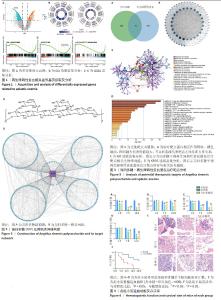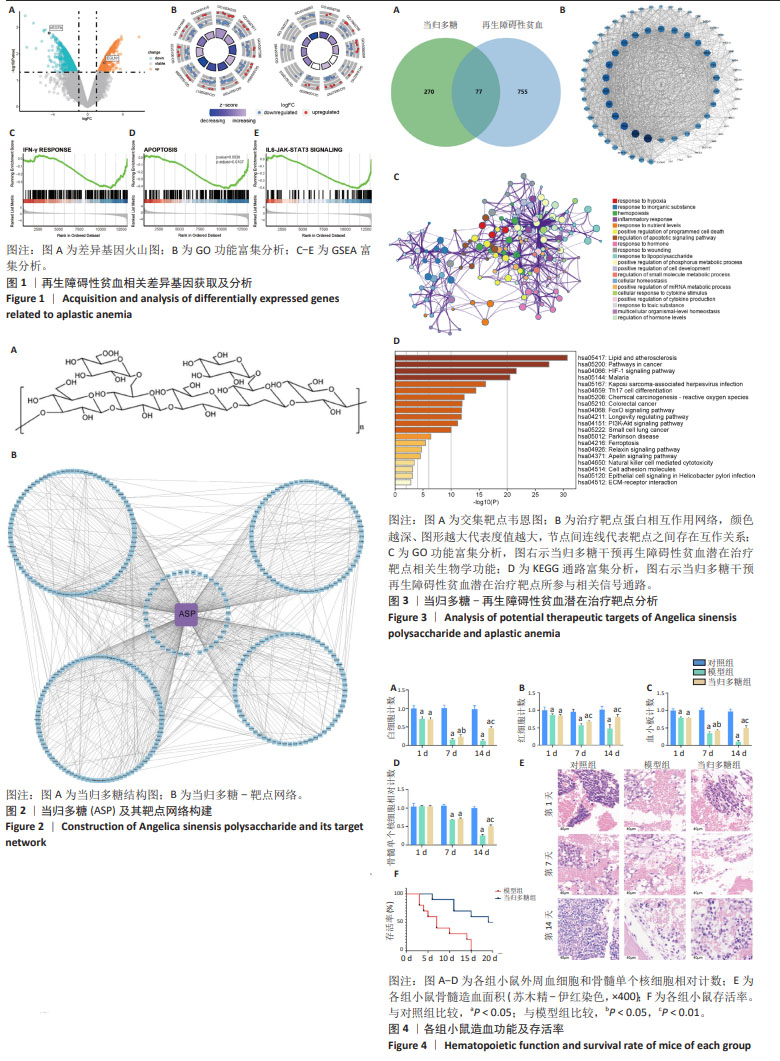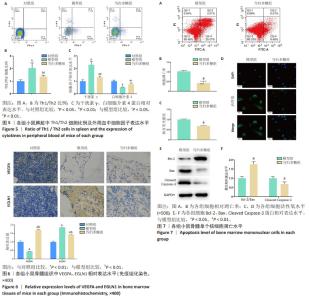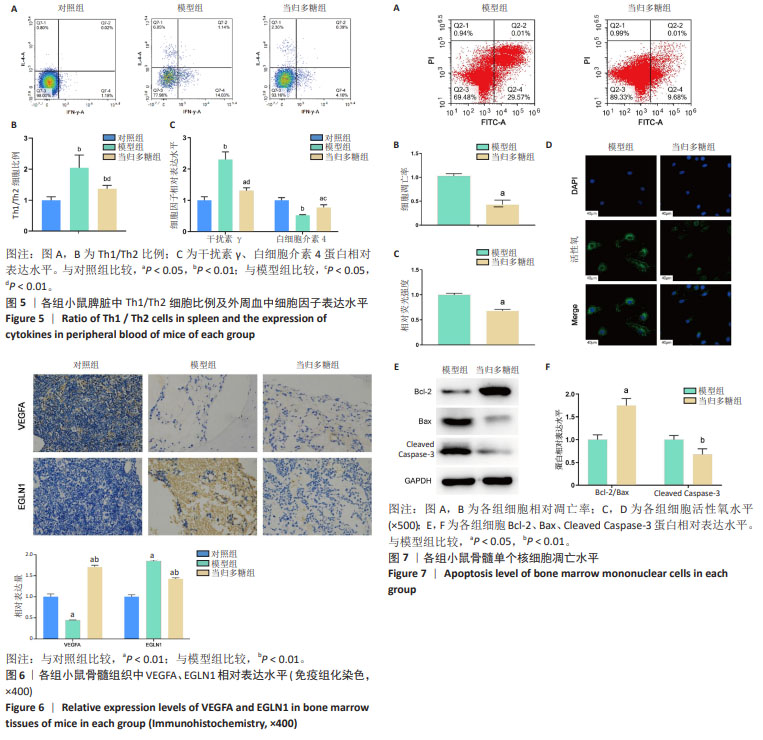[1] DEZERN AE, CHURPEK JE. Approach to the diagnosis of aplastic anemia. Blood Adv. 2021;5(12):2660-2671.
[2] ČERMÁK J. Aplastic anemia. Vnitr Lek. 2018;64(5):501-507.
[3] YOUNG NS, CALADO RT, SCHEINBERG P. Current concepts in the pathophysiology and treatment of aplastic anemia. Blood. 2006;108(8): 2509-2519.
[4] VAHT K, GORANSSON M, CARLSON K, et al. Incidence and outcome of acquired aplastic anemia: real-world data from patients diagnosed in Sweden from 2000-2011. Haematologica. 2017;102(10):1683-1690.
[5] CABANNES-HAMY A, BOISSEL N, PEFFAULT DE LATOUR R, et al. The effect of age in patients with acquired aplastic anaemia treated with immunosuppressive therapy: comparison of Adolescents and Young Adults with children and older adults. Br J Haematol. 2018;183(5):766-774.
[6] PIERRI F, DUFOUR C. Management of aplastic anemia after failure of frontline immunosuppression. Expert Rev Hematol. 2019;12(10): 809-819.
[7] NAI J, ZHANG C, SHAO H, et al. Extraction, structure, pharmacological activities and drug carrier applications of Angelica sinensis polysaccharide. Int J Biol Macromol. 2021;183:2337-2353.
[8] YOUNAS F, ASLAM B, MUHAMMAD F, et al. Haematopoietic effects of Angelica sinensis root cap polysaccharides against lisinopril-induced anaemia in albino rats. Pharm Biol. 2017;55(1):108-113.
[9] ZHANG W, ZHAO L, MA J, et al. A kind of injectable Angelica sinensis polysaccharide (ASP) / hydroxyapatite (HAp) material for bone tissue engineering promoting vascularization, hematopoiesis, and osteogenesis in mice. Int J Polym Mater. 2017;67(4):205-211.
[10] 卞育婕,李伟望,李孟柯,等.泛T淋巴细胞结合照射诱导的再生障碍性贫血小鼠模型的优化[J].中国实验血液学杂志,2021,29(2): 557-566.
[11] 徐瑞荣,崔兴,王琰,等.当归补血汤促进小鼠骨髓移植后造血组织重建的研究[J].中国实验方剂学杂志,2008,14(10):39-41.
[12] 金阳,葛金环,刘思琦,等.当归多糖的化学结构、药理作用及构效关系研究进展[J].中医药信息,2022,39(2):69-77.
[13] 陈信义,麻柔,李冬云.规范常见血液病中医病名建议[J].中国中西医结合杂志,2009,29(11):1040-1041.
[14] 李红辉,唐石欢,张先平,等.当归多糖对造血干细胞SIRT1、p53和p21表达的影响[J].广东医学,2021,42(12):1437-1441.
[15] 孔惠敏,苏伟青,叶红,等.当归补血汤及其主要成分对骨髓抑制小鼠的抗造血细胞凋亡的研究[J].中国实验血液学杂志,2022,30(6): 1679-1687.
[16] YU W, WANG Q, GE M, et al. Cluster analysis of lymphocyte subset from peripheral blood in newly diagnosed idiopathic aplastic anaemia patients. Ann Med. 2022;54(1):2431-2439.
[17] FENG X, XU H, YIN L, et al. CD4+ T-Cell Subsets in Aplastic Anemia, Myelodysplastic Syndrome, and Acute Myelogenous Leukemia Patients: a Comparative Analysis. Clin Lab. 2023;69(7). doi: 10.7754/Clin.Lab. 2023.221220.
[18] LI B, QI X, LIU Y, et al. Monocyte-derived macrophages: The supplements of hepatic macrophage in Echinococcus multilocularis infected mice. Immun Inflamm Dis. 2022;10(10):e699.
[19] YANG R, MELE F, WORLEY L, et al. Human T-bet Governs Innate and Innate-like Adaptive IFN-γ Immunity against Mycobacteria. Cell. 2020; 183(7):1826-1847.
[20] INOUE Y, NAKAYAMADA S, KUBO S, et al. T helper cells expressing fractalkine receptor and bearing T follicular helper 1-like cell functions in patients with IgG4-related disease. Rheumatology (Oxford). 2022; 61(9):3854-3863.
[21] KRUEGER PD, GOLDBERG MF, HONG SW, et al. Two sequential activation modules control the differentiation of protective T helper-1 (Th1) cells. Immunity. 2021;54(4):687-701.
[22] WAŚKIEL-BURNAT A, OSIŃSKA M, SALIŃSKA A, et al. The Role of Serum Th1, Th2, and Th17 Cytokines in Patients with Alopecia Areata: Clinical Implications. Cells. 2021;10(12):3397.
[23] TANG D, LIU S, SUN H, et al. All-trans-retinoic acid shifts Th1 towards Th2 cell differentiation by targeting NFAT1 signalling to ameliorate immune-mediated aplastic anaemia. Br J Haematol. 2020;191(5):906-919.
[24] CHEN X, BI M, YANG J, et al. Cadmium exposure triggers oxidative stress, necroptosis, Th1/Th2 imbalance and promotes inflammation through the TNF-α/NF-κB pathway in swine small intestine. J Hazard Mater. 2022;421:126704.
[25] KORDASTI S, MARSH J, AL-KHAN S, et al. Functional characterization of CD4 + T cells in aplastic anemia. Blood. 2012;119 (9):2033-2043.
[26] CHEN T, CHEN Y, BAO W, et al. T-lymphocyte subsets and Th1/Th2 cytokines in convalescent patients with Epstein-Barr virus-associated aplastic anemia. Hematology. 2020;25(1):11-16.
[27] 黄莉锋,邓姝,林圣云.调控血管新生在治疗再生障碍性贫血中的作用[J].临床血液学杂志,2018,31(1):59-61.
[28] JAVAN MR, SAKI N, MOGHIMIAN-BOROUJENI B. Aplastic anemia, cellular and molecular aspects. Cell Biol Int. 2021;45(12):2395-2402.
[29] 杨新平.IL-17、IL-23、VEGF在再生障碍性贫血患者血清中的检测及其临床意义[J].上海医药,2015,36(13):34-37.
[30] 张小敏,朱玲玲,肖扬.再生障碍性贫血相关信号通路的研究进展[J].中国病理生理志,2021,37(11):2094-2099.
[31] 刘瑞玉,巫远忠,范火亮,等.再生障碍性贫血患者血清sVCAM-1、IL-18和VEGF水平及其临床意义[J].中国实验血液学杂志,2009, 17(1):117-120.
[32] DENG S, ZENG Y, WU L,et al. The regulatory roles of VEGF-Notch signaling pathway on aplastic anemia with kidney deficiency and blood stasis. J Cell Biochem. 2019;120(2):2078-2089.
[33] LI H, WANG L, PANG Y, et al. In patients with chronic aplastic anemia, bone marrow‐derived MSCs regulate the Treg/Th17 balance by influencing the Notch/RBP‐J/FOXP3/RORgammat pathway. Sci Rep. 2017;7:42488.
[34] 阮俊霞,张秀萍,姚少波,等.乳腺癌组织来源的γδ1 T细胞通过产生IL-17D诱导初始CD4+ T细胞免疫衰老[J].细胞与分子免疫学杂志,2021,37(7):623-632.
[35] LU N, HUI H, YANG H, et al. Gambogic acid inhibits angiogenesis through inhibiting PHD2-VHL-HIF-1α pathway. Eur J Pharm Sci. 2013; 49(2):220-226.
[36] HUI MK, WU WK, SHIN VY, et al. Polysaccharides from the root of Angelica sinensis protect bone marrow and gastrointestinal tissues against the cytotoxicity of cyclophosphamide in mice. Int J Med Sci. 2006;3(1):1-6.
[37] VOTAVOVA H, BELICKOVA M. Hypoplastic myelodysplastic syndrome and acquired aplastic anemia: Immunemediated bone marrow failure syndromes. Int J Oncol. 2022;60(1):7.
[38] SONG X, ZHANG L, ZHANG S, et al. Discorea nipponica saponins restore the Th17/Treg balance in aplastic anemia through the Notch/RBP-J/FOXP3/RORγt axis. J King Saud Univ Sci. 2020;32(2):1664-1672.
[39] LOK SW, WHITTLE JR, VAILLANT F. A phase ib dose-escalation and expansion study of the BCL2 Inhibitor venetoclax combined with tamoxifen in ER and BCL2-Positive metastatic breast cancer. Cancer Discov. 2019;9(3):354-369.
[40] XU D, LIU L, ZHAO Y, et al. Melatonin protects mouse testes from palmitic acid-induced lipotoxicity by attenuating oxidative stress and DNA damage in a SIRT1-dependent manner. J Pineal Res. 2020;69(4): e12690.
[41] LIU M, WU X, CUI Y, et al. Mitophagy and apoptosis mediated by ROS participate in AlCl3-induced MC3T3-E1 cell dysfunction. Food Chem Toxicol. 2021;155:112388.
[42] CHATTERJEE R, LAW S. Epigenetic and microenvironmental alterations in bone marrow associated with ROS in experimental aplastic anemia. Eur J Cell Biol. 2018;97(1):32-43.
[43] SUN F, ZHOU JL, WEI SX, et al. Glucocorticoids induce osteonecrosis of the femoral head in rats via PI3K/AKT/FOXO1 signaling pathway. PeerJ. 2022;10:e13319.
[44] GUO W, YAO X, LAN S, et al. Metabolomics and integrated network pharmacology analysis reveal SNKAF decoction suppresses cell proliferation and induced cell apoptisis in hepatocellular carcinoma via PI3K/Akt/P53/FoxO signaling axis. Chin Med. 2022;17(1):76. |



